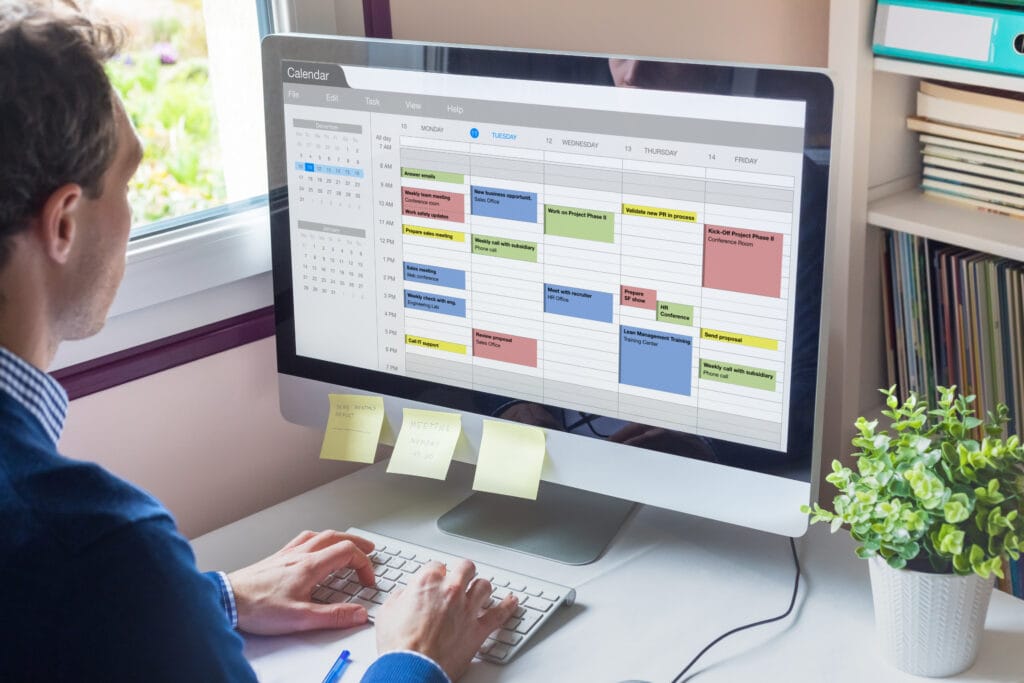 Do you feel like you control your schedule? Or that your schedule controls you?
Do you feel like you control your schedule? Or that your schedule controls you?
Especially now after reopening, things may seem overly hectic. Between handling the backlog of patients from the shutdown, additional PPE and safety requirements and possibly working additional hours, it can all seem overwhelming.
This can not only create stress and confusion on the schedule but could potentially hurt your current and future productivity.
A Scheduling Coordinator that hasn’t been properly trained will put appointments on the schedule wherever there is an opening, employing no scheduling strategy of any kind. Almost like a game of Tetris. And while this gives you a “full” schedule, it can create problems and inefficiencies—the doctor only has 2 minutes for a hygiene exam (or none at all and the patient leaves without an exam), you can’t fit an emergency or new patient in, have no time for consults/case presentations, or you start running behind. None of which are a recipe for a healthy productive practice!
(Related: 7 Ways to Fill Openings in the Doctor’s Schedule)
So, what could you do, right now, to exert more control over your schedule? Or to put it another way, how can you start running your schedule instead of the other way around?
Well, that’s the subject of this post!
One last thing before I start: I’ll cover some useful tips in the post, but to truly get control of your schedule, you need a proper scheduling system, office policies and training for your team. I recommend speaking to an MGE coach free of charge (book a meeting here) or using our on-demand video training platform, DDS Success. You can schedule free demo here.
So, with that, let’s get started!
1. Delineate doctor time vs. assistant time in the schedule.
 If you already do this, great! If you don’t, it’s time to start.
If you already do this, great! If you don’t, it’s time to start.
Your software will allow you to mark each 10 or 15 minute unit with the provider assignment (a symbol for the doctor and a symbol for the assistant). Marking this on the schedule lets you know if the doctor needs to be in the room during that time, or if they could be in another op.
This way you can overlap the appointments efficiently and avoid having the doctor committed in two places at once.
If you don’t know exactly how much time is required for the assistant to prep a patient and for the doctor to perform the procedure, then you need to find out. I recommend keeping a sheet of paper or some cards in each op so the assistant can mark the times during procedures. For a week they’ll just mark how much time is required for each procedure until you have a good idea of it and can start scheduling it accurately.
2. Use 10-minute units
We want to be as precise as possible with the schedule, and 10-minute units are more precise than 15-minute units. It may not sound like a big difference, but when you do the math on it, you’ll see that this change can eliminate a lot of wasted time. If the doctor only needs 10 minutes for something, I don’t want any extra time tied up.
(Related: A “Full” Schedule is Not Always a Productive Schedule)
3. Build time into the doctor’s side of the schedule for hygiene exams
 If the doctor is just popping over for hygiene exams whenever they feel like they have a minute… it gets messy.
If the doctor is just popping over for hygiene exams whenever they feel like they have a minute… it gets messy.
So I’d look at the schedule to see when the doctor will be needed for exams, and pad the doctor’s appointments by 5 or 10 minutes (as appropriate) to do those exams.
One of the biggest production killers is when the doctor doesn’t have time to properly present treatment to hygiene patients. Your hygiene department should be your biggest source of production for the doctor—but if they don’t have time to properly diagnose, present treatment, and get that “Yes” from the patient, then you won’t get any production from it.
It’s worth padding this extra time into the schedule.
4. Assistants should be doing everything they are allowed to in your state.
The doctor should not be doing anything they don’t absolutely need to be doing. I know the doctor may feel like they can do it better or it’ll be more efficient since they’re already there—but right now the doctor’s time is crucial. With a backlog of patients and extra production demands to make up for lost time the doctor must be extra productive.
(Related: 3 Easy Steps to Boost Productivity in Your Schedule)
So make sure your assistants are properly trained on and comfortable doing everything they are allowed to do in your state or province and have them do it. And as I mentioned in point #1 above, assign that time to the assistant in the schedule so the doctor can be seeing another patient or presenting a treatment plan.
5. Be strategic with where you put appointments on the schedule.
 You want each day on the schedule to be a mix of:
You want each day on the schedule to be a mix of:
- High production appointments
- Medium and low production appointments
- Opportunities to present treatment for future production (consults, patients with outstanding treatment, etc.)
- New patients
- Time for emergencies
If you maintain this balance you will have solid production today, tomorrow, next week, next month, etc.
But if you fill-up the schedule incorrectly and sacrifice some of those categories, you end up paying for it either now or later.
This is where having a good scheduling system really comes in, and it’s probably too much to outline in this blog post. It requires some block scheduling while also retaining flexibility. You’d need to speak with us here at MGE or use our on-demand video training platform DDS Success to really get a handle on it. You can schedule a free demo here.
But I want you (and your Scheduling Coordinator) to start thinking with the idea that you’re not just filling up openings in the schedule wherever they can fit.
I hope these tips help! If you have any questions or would like help with this, we’d be happy to do a free consultation with you. Fill out the form here to schedule it.


No Comments
Be the first to start a conversation